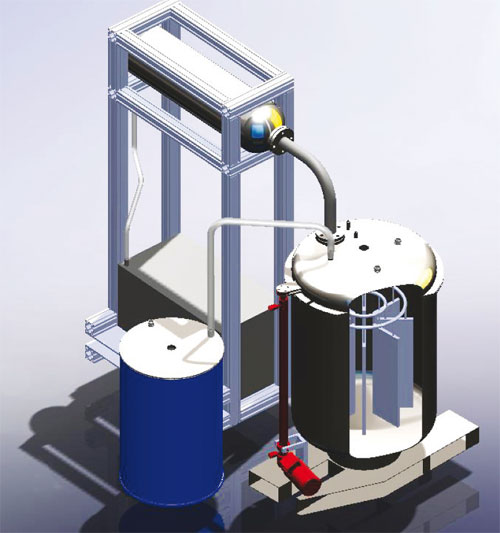Initial situation
Industrial production companies such as in the metal or printing industry, and also in the chemical and pharmaceutical industry, frequently produce highly polluted wastewater, which may not be discharged into the communal sewage system. Some of the contaminations (heavy metals, cyanide salts, solvents, complex chemical compounds, etc.) are very complex and difficult to break down.
For many companies this is a problem. Even if treatment were possible, especially at small firms, where often only limited quantities of wastewater are produced, a conventional water treatment plant mostly cannot be operated economically and/ or efficiently by the firm itself.
Therefore in many cases the waste water has to be disposed of externally as special waste. The cost of external disposal amounts to up to € 700/m³ plus the transport costs of up to € 500/m³, depending on the branch of industry and/or the type of wastewater. Typical of such kinds of wastewater is that there is a pollutant contamination in a high degree of dilution with, in some cases, 90 % or more water. Since the disposal costs are calculated on the basis of the volume of waste, the percentage of water is of decisive importance. Also, as a result of the disposal of the waste material, the company loses both the water and valuable substances such as organic solvents without any possibility of recovering them.
 Fraunhofer Institute for Interfacial Engineering and Biotechnology IGB
Fraunhofer Institute for Interfacial Engineering and Biotechnology IGB
